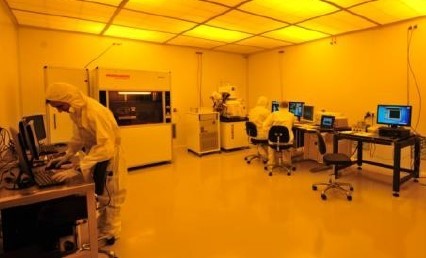RESEARCH PROGRAMMES
P5: Solid state quantum devices for information technologies
P6: Technology Transfer Platform
RESEARCH SUPERVISOR(S)
Dr Mariela Andrea Menghini
Research Group website: https://www.imdeananociencia.org/home-en/people/item/jose-luis-vicent-lopez
Prof Daniel Granados Ruíz
Research Group website: https://nanociencia.imdea.org/quantum-nanodevices/
Dr Enrique Cánovas
Research Group website: https://ecanovas6.wixsite.com/nanopv
RESEARCH TOPIC DESCRIPTION
Many of the technological challenges humanity is facing can, to a large extent, be mitigated by the development of novel materials with targeted functionality. As a neat example, the discovery of graphene opened the path for exploiting novel physical properties in 2D materials in a plethora of applications that concur transversally to many sectors like electronics, composites, biomedical, energy, etc. One of the peculiarities of graphene is the electronic band structure featuring Dirac cones that give place to exotic electronic and transport properties such as the observation of the Quantum Hall effect (QHE) at room temperature. The QHE has attracted much interest not only for revealing many important aspects of quantum physics but also has led to the establishment of a new metrological resistance standard based on the quantum resistance h/e2.
Developing novel Dirac materials with fine control of electronic properties will represent a breakthrough in science and technology; opening the path for employing a new library of Dirac materials for applications where graphene has demonstrated limitations, while keeping the advantages already demonstrated by graphene. For example, many 2D covalent- and metallo-organic framework (COF and MOF) structures displaying Dirac cones have been predicted but, only recently, one of these materials has been demonstrated experimentally.
The proposed research topic is focused on quantum transport and electronic properties of 2D COF-MOFs to demonstrate their Dirac nature and pursue the development of new quantum resistance standards based on these novel materials.
This line of work involves cross-group/programme research within IMDEA Nanociencia. The PD could be directly involved and/or contribute in device preparation (clean room -– D. Granados), electrical characterization (optical and electrical -– E. Cánovas & M. Menghini) and electronic characterization (ARPES -– M. Valbuena, STM -– D. Ecija) with theoretical support (F. Guinea).
POSITION DESCRIPTION
A typical background would be a PhD in Physics, Physical-Chemistry, Material Science or in a closely related field of science. Research interests aligned with: quantum physics, quantum transport, organic electronics (metal- and covalent-organic frameworks), surface science, quantum materials and/or nanodevices. Practical skills on electrical characterization (optical and magneto-electrical) as well as cleanroom-based fabrication processes would be suitable for the development of the project. Candidates with a strong publication record and a systematic research attitude are encouraged to apply.
PARTNER ORGANIZATIONS
The offered research project will include a 2-6 months placement at CEM – Spanish Metrology institute. During this period the PD will be trained and directly involved on performing metrology grade QHE measurements in novel 2D materials.
Collaborations with other EU metrology institutes (IMRIM, PTB, LNE, GUM and TUBITAK) are foreseen within the umbrella of the EU EMPIR project COMET. Possibility for short stays at TU Dresden (synthesis of novel 2D materials) and Max Planck Institute for Polymer Research (advanced surface characterization) are viable within the context of the project.




